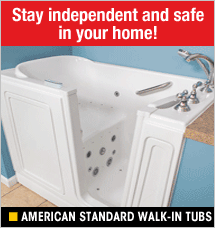Dollar Sense
A Cruise Isn’t as Expensive as You Might Think

Who can afford a cruise these days? With a little planning, you probably can. When my sister announced she was finally ready for a cruise to Alaska, I was excited. I’d been trying without success to get her to go for awhile, so I quickly said yes. Then I starting thinking… could I afford this? I’d been on three cruises before, but they had been gifts or awards so I didn’t really know how it worked. This cruise I would be paying for myself. And I needed a new roof on my house and some car repairs. Still, I wasn’t going to miss this chance so I told her to go ahead and book our tickets. In the end, it was far more affordable than I expected, and part of that was my sister’s planning ability.
Here’s What We Found
Booking early or late. Last minute deals are usually pretty good, but most of us have lives that don’t allow us to jump on a ship on short notice. So we did the opposite. We booked almost a year in advance. Our cruise was to leave at the end of May 2013, and the cruise line offered an early bird special if we booked by June 30, 2012. We each made initial deposits of $350, and had nine months to pay the balance. The best part was, we could go online and make payments as we were able, or wait and pay a lump sum. I paid monthly and barely noticed it.
Departure date. Depending on the destination, there is generally a point on the calendar when the price starts to rise. We found that the preferred time to take an Alaskan cruise started in June, which also meant the prices began to rise. But we booked our departure for May 28th. That put us on the cusp, where we got the lower price, but the beginning of the best sail time. And the weather was great.
Call backs. My sister did the booking, and was told she could call back throughout the next year to ask if the price of the cruise had dropped. We intended to call back regularly, but we got busy and as it happened, she called back only once. But that call got us some goodies.
- We were upgraded from our original booking of a balcony cabin with a partially obstructed view, to a cabin with a full ocean view.
- We both intended to buy cruise insurance, which would’ve cost us $119 each. But we were given enough credits on our accounts that we got it free.
- We still had enough credit left to have $50 cabin credit on each of our accounts, to use for purchases onboard, or receive as cash at the end of the cruise.
Just before our departure date we were offered an upgrade to a suite for a spectacular price. But a suite was more room than we needed so we decided to pass.
General Savings Tips to Cruise on a Small Budget
Cabin choice. There are all sorts of cabins. After our upgrade we had a balcony cabin with a full view. Before that, we had booked a cabin with a balcony, but a partially obstructed view, to save money. If your budget is really tight, you can literally save hundreds by booking an interior cabin. That means your cabin is in the middle of the deck, rather than being on the outer edges where there are windows and possibly balconies. Sure a view from your cabin is nice, but keep in mind, the view is still available 24 hours a day from the upper decks.
Avoid the extras onboard. Sodas, alcoholic drinks, specialty coffees, and bottled water all cost extra, so we mostly avoided them. Lemonade, juice, coffee, tea, and tap water are free. We were given coupons for free drinks, a couple of times during the cruise and we made sure to use them. We knew from previous cruises that you cannot take a bottle of water onboard with you, similar to the way you can’t take a bottle of water or other liquid on a plane. So we each took empty reusable water bottles to refill, and avoid buying bottled water onboard.
Eat onboard rather than in the ports. When we were in ports, we spent our time sightseeing and shopping, rather than eating. Not only was it a better use of the time, but as it was there was more good food onboard (that was free) than we could possibly eat, so it didn’t make sense to pay extra in the ports.
Before the Cruise
Parking. If you drive yourself to the port city, as we did, you’ll need to pay to park your car. Parking at the port in Seattle would have started at $20 a day for the bargain parking, for seven days (or $140).
Plus, traffic to the port was a little nerve-wracking. Since we had a long drive to get to Seattle, we drove up the day before and stayed in the Seattle Best Western. Thanks to my sister’s research skills, she found we could stay there in a nice room, have a complimentary full breakfast, and take advantage of their parking package which cost us $8 a day.
Transportation to the port. A shuttle picked us up at the Best Western and drove us to the port… no hassles with driving and it cost us each $12 each direction. Even with the cost of the shuttle, we saved $36 on parking, and best of all, did not have to brave the traffic.
So what was the bottom line? Apart from tipping and money we spent in ports (which was optional of course) we each paid about $1,000 for seven days at sea, and four ports. Keep in mind, there are shorter cruises, and they sail all year round. And by choosing an interior cabin, you can pay much, much less.
Did we get our money’s worth? Every penny.
Common Misconceptions About Cruising
- You pay separately for meals. Wrong. All meals are included, and you can eat to your heart’s content. Some cruise lines, like Carnival, have a steakhouse or other specialty restaurant where you can go and pay extra. But why? A meal in the formal dining room was at least as good, and it was free.
- Room service, more precisely, cabin service costs extra. There is no charge for cabin service, though we did tip the server.
- All the food is great or conversely all the food is bad. Neither is true. In the formal dining room, the food is excellent (and you do not have to dress up unless you choose to). If you don’t feel like going there, food bars are open where you mostly serve yourself. I didn’t love that food, since it was more like cafeteria fare, but some of it was quite good. I learned to take small helpings until I knew what I liked.
- Formal dress is required. Again, don’t believe that you have to dress in formal clothes to go to the formal dining room. On Carnival, they have two formal dress nights, but we saw people in shorts and t-shirts there too. Others were dressed in gowns and suits. As for us, we both wore black dress pants and nice sweaters. You may want to check with the cruise line if you are not going on Carnival.
- The cabins are tiny. Don’t believe what you see on TV. The rooms are not huge. But after four cruises, I have yet to see a tiny cabin.
- Not enough activities. We ended up curtailing our onboard activities because we were doing too much. There were times we couldn’t find anything of interest, but those were our read-a-book and rest times. And they were rare.
- Tipping is mandatory/tipping is optional. This is true and not true. The two cruise lines I have been on – Carnival and Royal Caribbean – each had a policy of charging tips to our rooms, at a flat rate. For the week we each were charged about $90 for tips. If this bothers you, ask the cruise line about it. We also tipped room service waiters, and as we departed the ship we left tips for our cabin steward and his crew. That was our choice because the service was so excellent.
Teresa Ambord is a former accountant and Enrolled Agent with the IRS. Now she writes full time from her home, mostly for business, and about family when the inspiration strikes.




























































